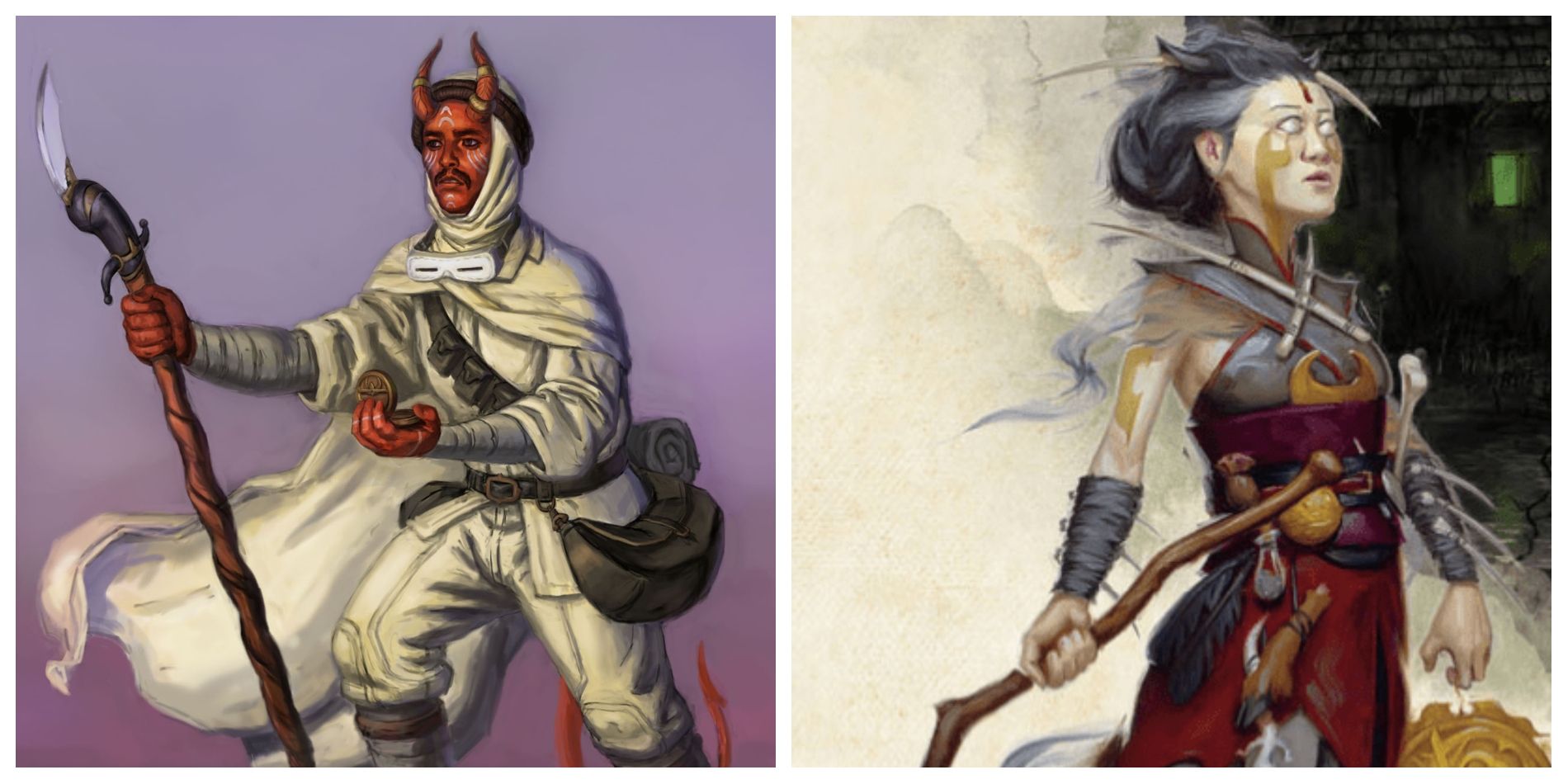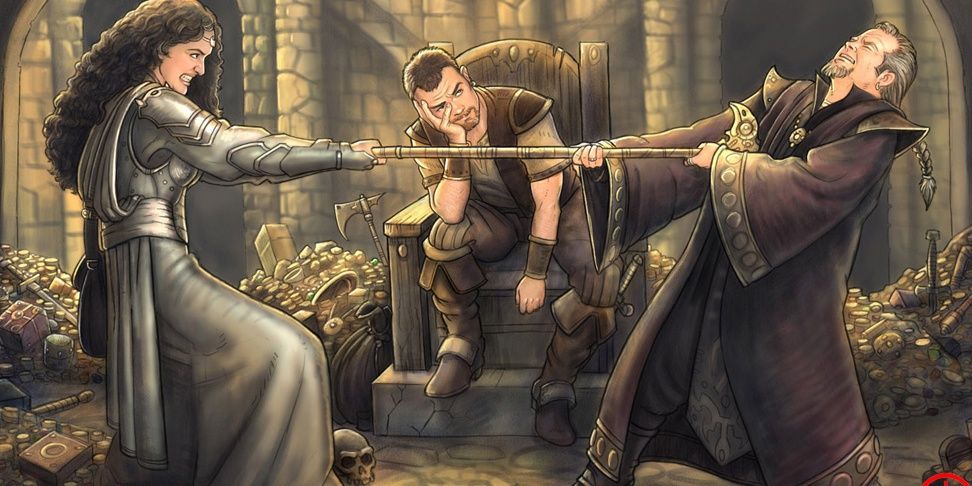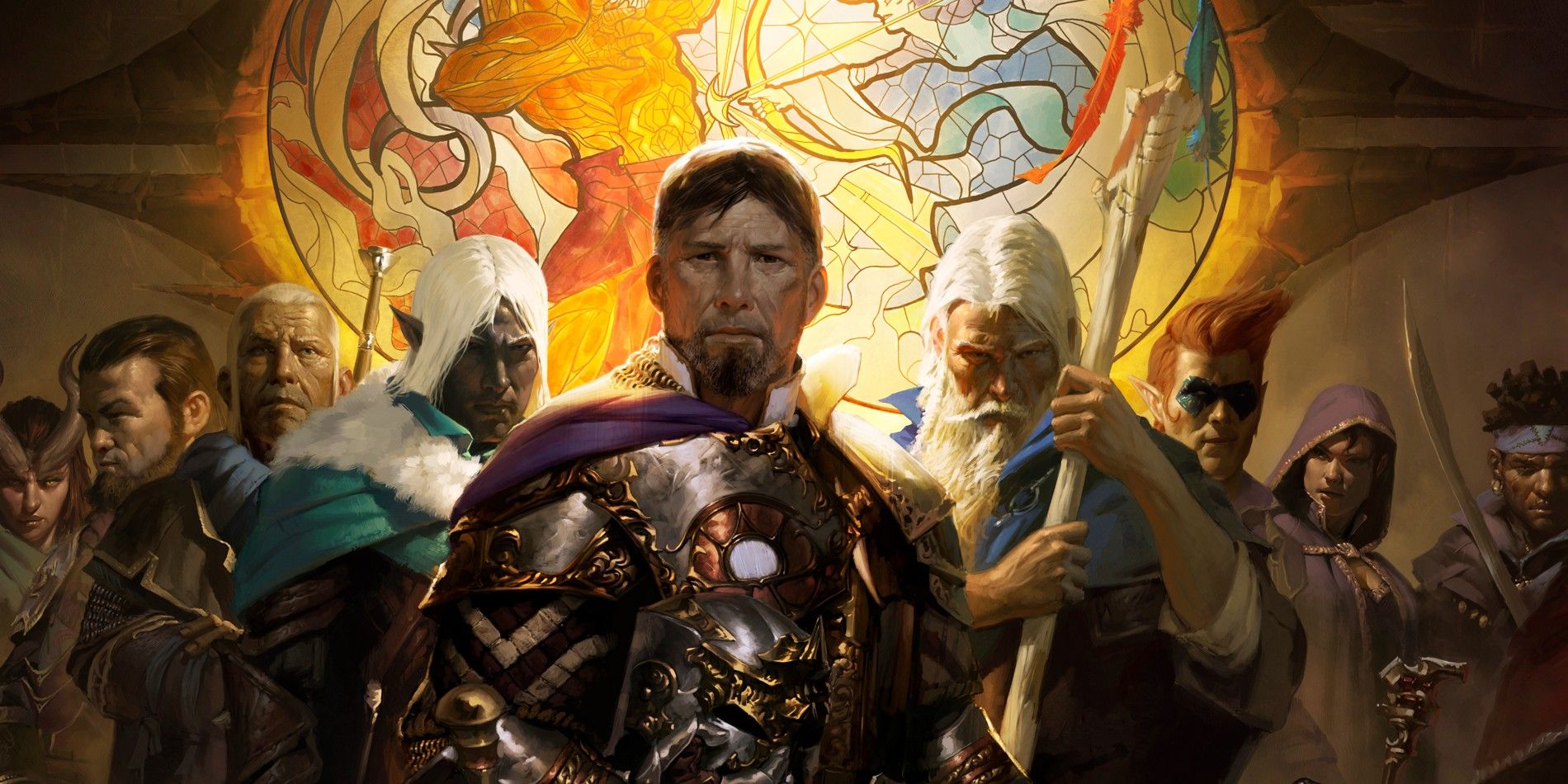The core books for Level Up: Advanced 5th Edition have been released to Kickstarter backers, giving tabletop RPG gamers a chance to see how the Dungeons & Dragons rules replacement system fares. Level Up accomplishes its stated goals by eliminating “dead levels” for classes that lacked meaningful choices at some character intervals, expands the exploration and social options for all classes, and provides martial combat maneuvers to make playing fighting classes more interesting, among others. It goes further, however, and by changing core D&D rules, rather than solely expanding on them, Level Up narrows its potential audience. By linking many of its new mechanics with changed baseline D&D rules, Level Up is designed as a full replacement, solely, not a “modular” set of rules to add on to existing D&D mechanics. This means gaming groups will need to decide if they want to run a D&D game, or a Level Up game, as the compatibility is with existing adventures and modules, not with the current rules.
The approach of Level Up has common ground with Pathfinder’s first edition, which expanded on the 3.5e D&D system to create a new game that was backward compatible with published D&D adventures. Level Up aimed to address some of the missing elements of the 5e D&D ruleset, adding in pricing guidelines for magic item, item creation rules, and other elements that were present in legacy D&D editions, but not the current rules. It expands on the exploration pillar of the game considerably, where the core 5e D&D dedicates more rules to combat, and it gives classes that lacked social and exploration-oriented features, like Fighters, the ability to contribute outside of battle.
The current industry leaders in fantasy tabletop RPGs, Dungeons & Dragons 5e and Pathfinder 2e, each have their relative merits, and some prefer the streamlined, easy to learn rules of D&D, while other groups prefer the more complex options presented in Pathfinder’s new edition. Level Up offers something of a middle ground, as its rules have a basis in 5e D&D’s but are more complex in many cases. The “compatibility” question is more nuanced, as Level Up’s rules function with D&D adventures, but its status as a rule replacement, instead of a modular rule addition, prevents it from functioning smoothly alongside core D&D classes and sub-classes.
Level Up Characters Do Not Work Well Alongside Core D&D Characters & Rules
Dungeons & Dragons itself has rule changes on the way, with a 5.5 edition scheduled for a 2024 release. Though Level Up likely adds more than D&D 5.5 will, in terms of new content, the official D&D revision will probably offer more compatibility, at least where the basic rules are concerned. Because Level Up is designed as a full replacement, rather than an add-on, groups will have a difficult time picking and choosing from the new rules.
The new Level Up armor table cannot be used without also adopting rules for item wear and tear, and maintenance checks, for example, or the armor types become imbalanced. The feats presented in Level Up are balanced around changes to core rules, including the way critical hits function. Groups that use the entirety of the Level Up rules should find them balanced in and of themselves, however, they are not designed to be used alongside D&D’s rules, but to overwrite them.
Because of its “all or nothing” approach, Level Up character classes cannot easily function in the same party as Dungeons & Dragons 5e classes. The balance of a D&D class is not determined in a vacuum, but by factoring in the effect of other feats, rules, and magic items. Most of D&D’s best character builds leverage the use of multiple feats as they are currently written, and the rules as they are currently presented. Level Up weakens many existing D&D elements, with its analogues for feats like Great Weapon Master and Polearm Master, as well as spells like Fireball and Counterspell, magic items like the Bag of Holding, and many more. The new Level Up classes are designed with these changes in mind, but existing 5e D&D classes rely heavily on those rules in their original forms, meaning a game can either use Level Up rules and characters, or D&D rules and characters, but not a mixture of the two, without risking serious balance issues at the table.
The upcoming D&D 5.5 revision could pose problems for homebrew and third-party D&D content, but this is less of an issue for Level Up as it already replaces D&D’s rules with its own. With at least two years before the revision hits the market, groups interested in experiencing published D&D adventures, but who are tired of the 5e D&D rules, may find that Level Up gives them exactly what they wanted. Other groups who are happy with the current rules, but not the often-flawed monster design of D&D, might still find use in the Level Up Monstrous Menagerie, which retains more compatibility with core D&D rules while fixing issues with many enemy encounters.
Some Fans Are Ready For New D&D Rules, Others Wait For 5.5
The most perplexing element of Level Up’s design is that the sweeping changes to core D&D rules were not necessary in order to accomplish the other goals of the game. Adding magic item prices and martial maneuvers, expanding on exploration, and filling in dead levels, are all laudable goals, and few 5e D&D groups would take issue with these additions. Making changes to existing D&D feats, spells, and magic items, was not required to add these on to the game’s existing framework, nor were the changes to some of the core rules of combat. A more modular approach also would have enhanced compatibility for Level Up, not just with D&D adventures, but also D&D characters and rules. By tying the balance of new content with rule changes, Dungeon Masters will have a difficult time picking and choosing the Level Up elements they like without accepting them all.
Classic D&D inspired a wave of Old School Renaissance games, some of which claim compatibility with adventure modules written for legacy editions of D&D. These provide a better frame of reference for Level Up than Pathfinder or other similar products. An adventure module written for 5e D&D can be ran with Level Up with minimal fuss and conversion, but Level Up is not an “add on” system. Its compatibility goals for adventures are largely met, therefore, but rule compatibility is not one of the game’s goals.
3.5e D&D products like Tome of Battle added martial maneuvers, and 4th edition D&D’s Martial Power 2 added a system for martial practices, akin to magical rituals. These were examples of first party products that added new rules and systems to Dungeons & Dragons that were fully compatible with the existing rules. Level Up: Advanced 5th Edition is a game unto itself, not a rules addendum or addition, which might be exactly what some groups are hoping for, while others will wait for the official 5.5 D&D for a more universal compatibility beyond just adventure modules and monsters.



